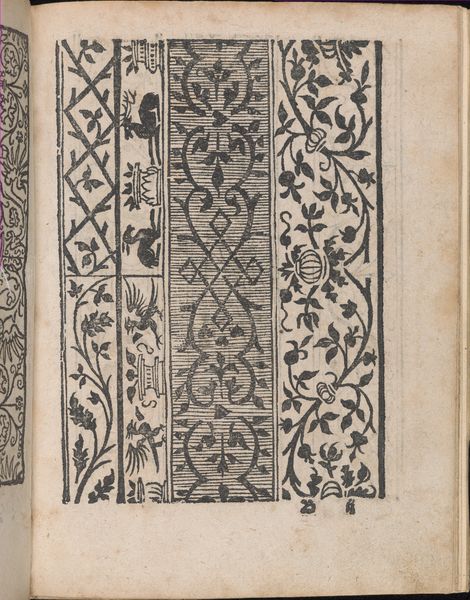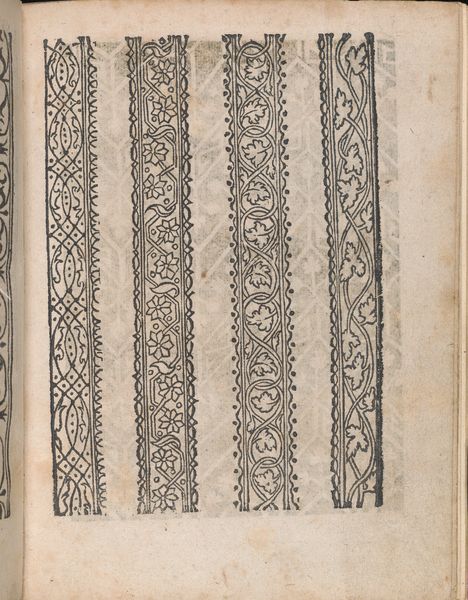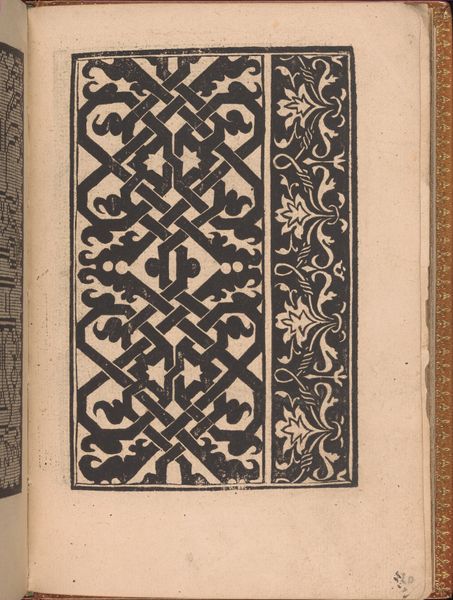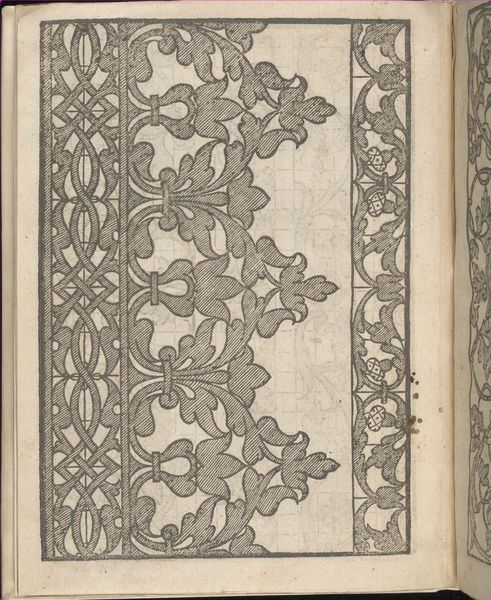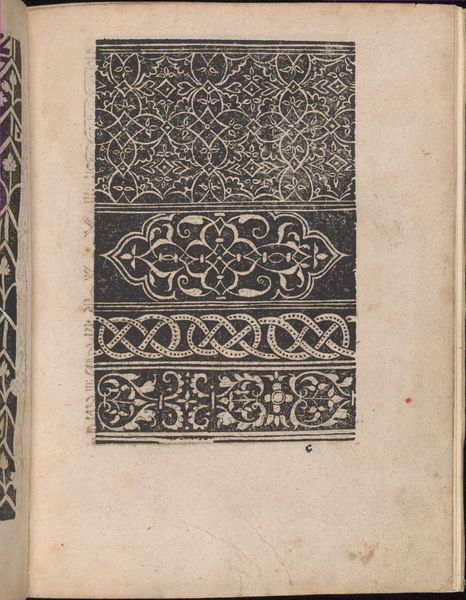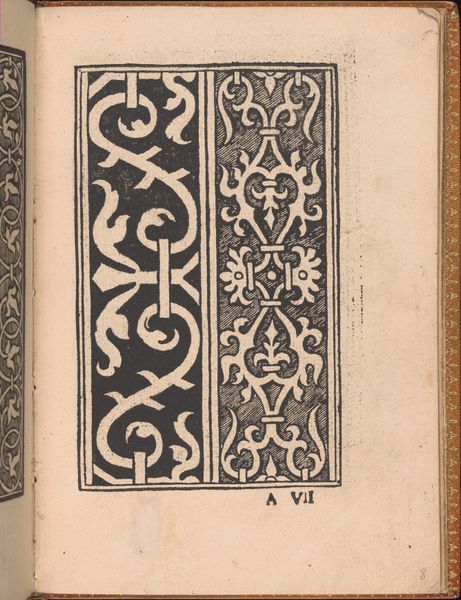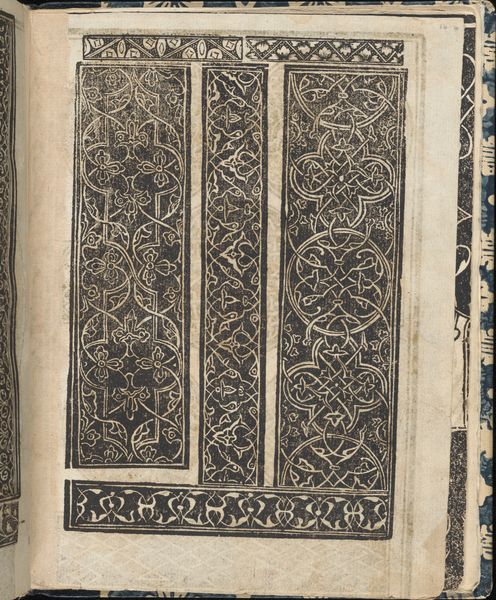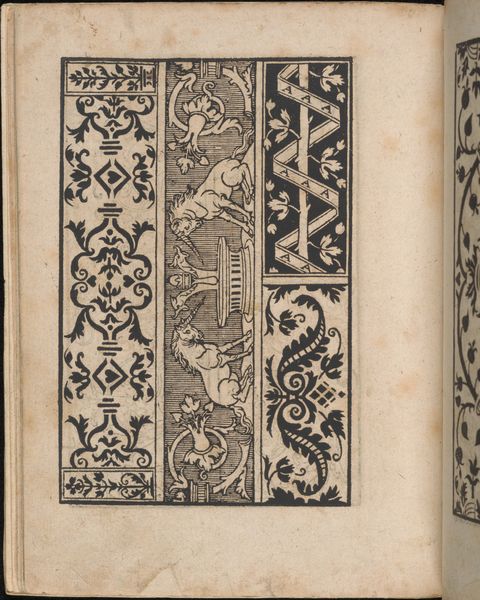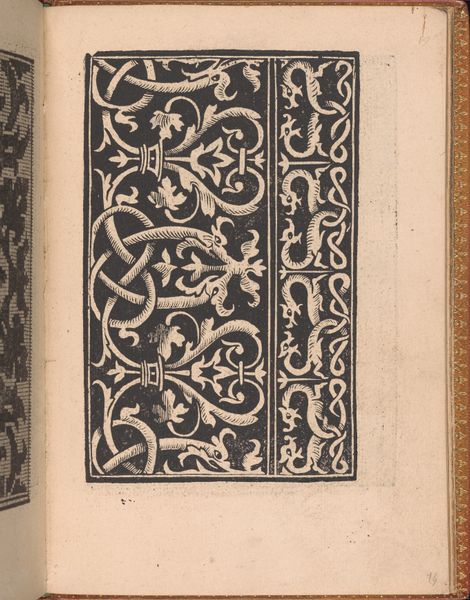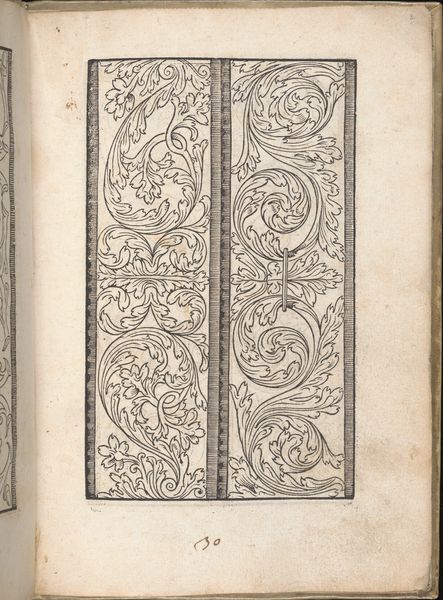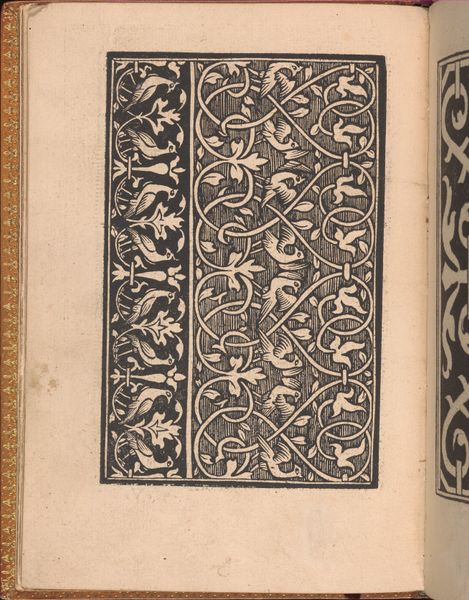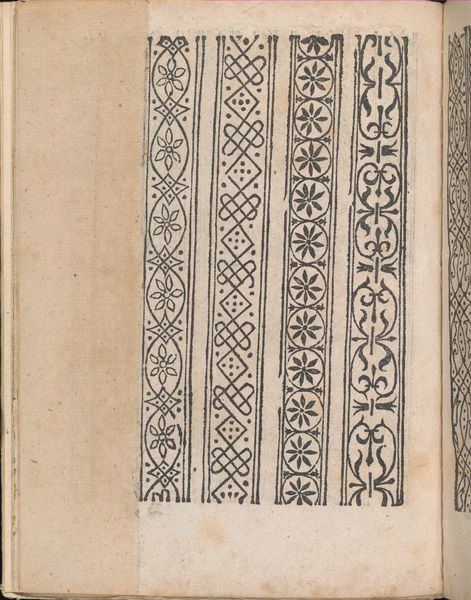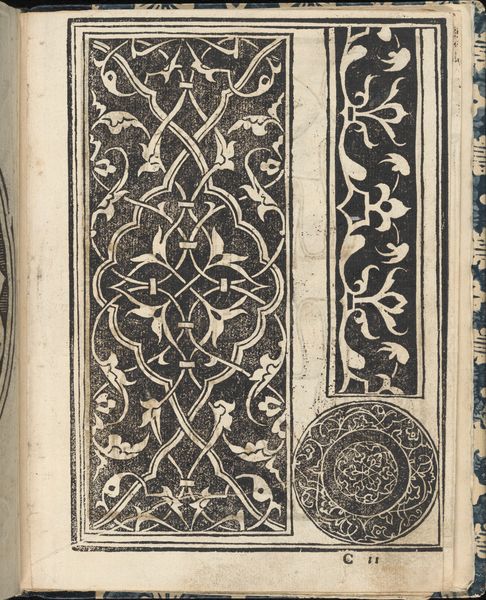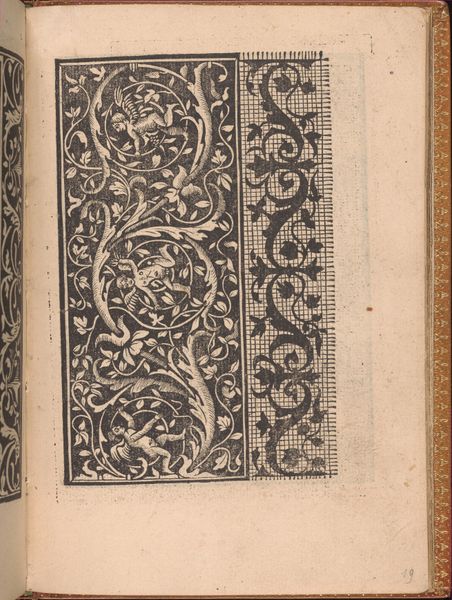
Modelbuch aller Art Nehens vn Stickens (Page 5v) 1535
0:00
0:00
drawing, print, ink, woodcut
#
drawing
#
medieval
#
animal
# print
#
flower
#
11_renaissance
#
ink
#
woodcut
Dimensions: Overall: 7 5/16 x 5 5/16 in. (18.5 x 13.5 cm)
Copyright: Public Domain
Editor: Here we have "Modelbuch aller Art Nehens vn Stickens (Page 5v)," created around 1535 by Christian Egenolff. It’s an ink and woodcut print drawing in a book format. The intricate borders of flowers and animals feel so precise. How do you interpret this work within its historical context? Curator: Well, considering this is a page from a model book for needlework, we must understand its social function within 16th-century society. These designs weren't just decorative; they empowered women, enabling them to participate in a visual language of status and identity through embroidery and other textile arts. Notice the animals and floral motifs - what could they signify in relation to a woman's role in that period? Editor: Hmm, maybe the flowers symbolize domesticity and the animals symbolize certain qualities, like the strength of a lion or the cleverness of a fox. Curator: Exactly. But it's also crucial to examine the political and economic landscapes. The Renaissance saw an increased demand for elaborate textiles, creating a need for pattern books like this. So how do these intricate designs potentially mirror the complexities of the era's societal structures? Are these designs accessible to all, or primarily to the elite? Editor: That's interesting. I hadn't thought about the economic aspect of it. It makes sense that something like this would reflect the hierarchy of the time. Curator: Indeed. This "Modelbuch" wasn’t simply about aesthetics. It participated in defining and reinforcing social roles, economic realities, and power dynamics of the Renaissance. Thinking about how these patterns contributed to gendered labor, and the accessibility of visual representation is what makes the artwork a valuable lens for studying society at the time. Editor: It’s amazing to see how even something that appears purely decorative is deeply intertwined with social and economic factors. I’ll never look at needlepoint the same way! Curator: Absolutely. Recognizing these interwoven narratives offers a richer and more nuanced understanding of both art and history.
Comments
No comments
Be the first to comment and join the conversation on the ultimate creative platform.
